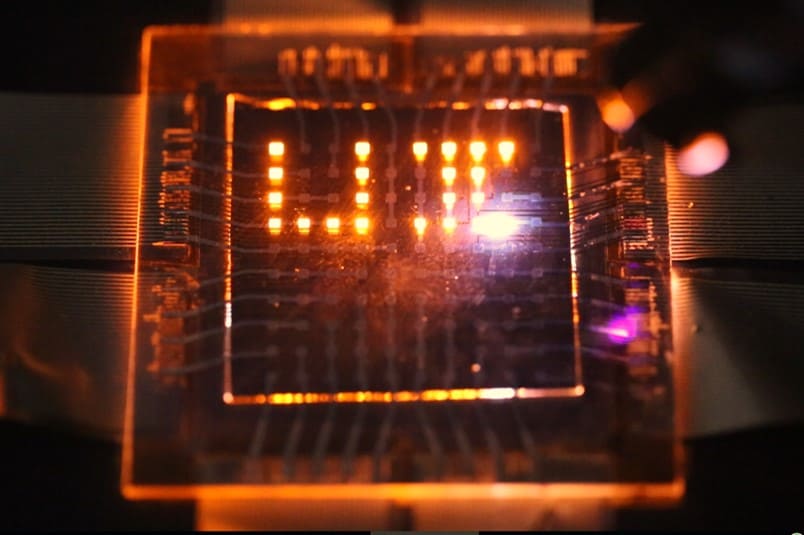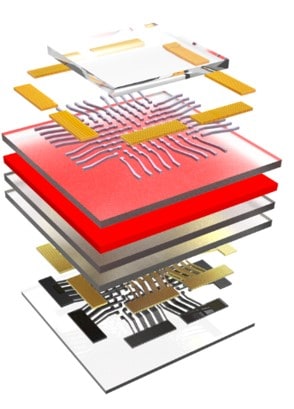
The pace of development in mobile technologies (particularly smart phones and tablet computers) has made these devices possibly the most disruptive to our way of life for decades. Research from the University of Illinois at Urbana-Champaign has now developed LEDs that could be used in mobile device displays that are capable of both emitting and detecting light, which would allow such functionality as charging from ambient light, changing display intensity according to light conditions, and detecting gestures to control the device without touching the screen.
The LEDs are composed of nanorods some 5nm in diameter, made from three types of semiconductor material. One type of semiconductor emits and absorbs visible light, while the other two control how electrons flow through the first material. The LEDs can switch between emitting and absorbing light faster than the human eye can see – three times faster than the normal refresh rate for standard LED. The display therefore appears to be on all the time even though it is performing other functions.
"These LEDs are the beginning of enabling displays to do something completely different, moving well beyond just displaying information to be much more interactive devices," said research leader Prof Moonsub Shim. "That can become the basis for new and interesting designs for a lot of electronics."
Just as important as their functionality is the way the LEDs are made, Shim added. “These nanorods are synthesised in and can be processed as solutions, much like organic polymers or molecules.” He said. “That’s what makes it easy to deposit thin films of these materials, which is necessary for making LED arrays out of them.”

Because the LEDs can respond like solar cells, a display using them could be used to partially recharge a device from sunlight or ambient light in a room. The display can detect changing light levels falling on it, and the team have already demonstrated that a display can brighten areas of the screen that are in shadow; moreover, Shim said, it can detect the shadow of an approaching finger or a bright spot of laser light being shone onto it, both of which could be used to control the device in an interactive whiteboard, for example.
Another option might be visible light communication, he suggested "Light generated from one LED can be detected by another,” Shim explained. “Both LEDs can emit light and detect each other’s signal simultaneously. Each LED communicating this way will be slower than established means of communication such as Bluetooth or near-field communication. However, those methods only offer serial communication – they only communicate one bit at a time. Arrays of bi-drectional LEDs can communicate as many bits as the number of LEDs there are, allowing massively parallel modes of communication.”
The research, which was a collaboration between the University of Illinois and Dow Chemical, is detailed in a paper in Science.
A Q&A with Shim can be found here: https://uofi.app.box.com/v/multifunctionLEDs/1/17981971299/130013206123/1




Nanogenerator consumes CO2 to generate electricity
Whoopee, they've solved how to keep a light on but not a lot else.